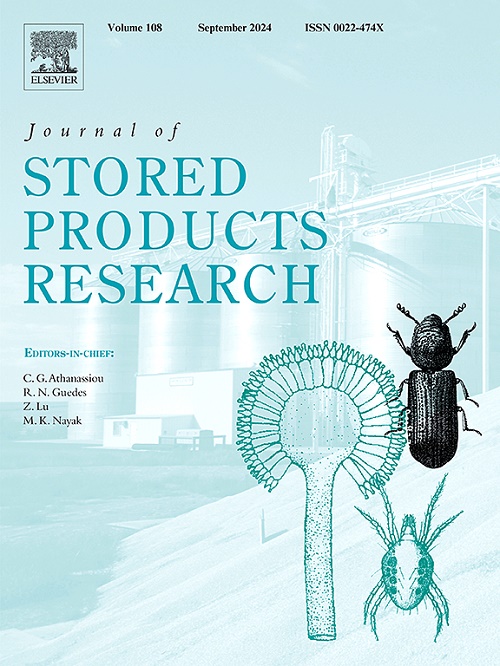通过改良大气包装(MAP)推进可持续性新鲜食品保存:一个重要的回顾
IF 2.7
2区 农林科学
Q1 ENTOMOLOGY
引用次数: 0
摘要
改性大气包装(MAP)已成为食品保鲜领域的一项重要技术,是防止食品浪费的关键解决方案,食品浪费约占全球食品总产量的30 - 40%。MAP通过改变包装内气体的组成来减缓微生物的增殖和氧化降解,从而大大延长了新鲜食品的保质期。MAP可将水果和蔬菜的保质期延长50 - 200%,具体取决于商品和储存条件。例如,草莓在MAP (5% O2和15% CO2)中储存长达14天而没有质量损失,而在正常大气条件下只有4-5天。在类似的线路中,MAP包装的高二氧化碳浓度肉制品与传统包装相比,保质期延长了40 - 60%。从可持续发展的角度来看,MAP每年有助于防止全球13亿吨食物浪费,并减少与食物腐败有关的温室气体排放。此外,可以生物降解或回收的MAP材料的突破有助于减少塑料废物,并防止环境问题。该技术的适应性使制造商能够最好地管理不同食品中的不同气体混合物和包装结构。这篇综述旨在提供MAP的概述,最近的进展,挑战,以及它在食品可持续性方面的潜在重要性,通过浪费,质量保持和环保意识包装创新。本文章由计算机程序翻译,如有差异,请以英文原文为准。
Advancing sustainability through modified atmosphere packaging (MAP) for fresh food preservation: A critical review
Modified Atmospheric Packaging (MAP) has become a significant technology in the field of food preservation and is a critical solution against food waste, which is responsible for about 30–40 % of the entire global food production. MAP greatly prolongs the shelf life of fresh foods by slowing microbial proliferation and oxidative degradation by modifying the compositions of gases within packaging. MAP can extend the shelf life of fruits and vegetables by 50–200 %, depending on the commodity and storage conditions. For example, strawberries have been stored in MAP (5 % O2 and 15 % CO2) for up to 14 days without loss of quality compared with 4–5 days under normal atmospheric conditions. In similar lines, MAP packaged meat products with high CO2 concentration show up to 40–60 % longer shelf life compared to those of conventional packaging. From a sustainability perspective, MAP helps prevent 1.3 billion tons of global food waste each year and reduces greenhouse gas emissions related to food spoilage. Furthermore, breakthroughs in MAP materials that can be biodegraded or recycled contribute to the reduction of plastic waste, and prevent environmental issues. The adaptability of the technology enables manufacturers to best manage different gas mixtures and packaging structures in varied food products. This review aims to provide an overview of MAP, recent advances, challenges, and its potential importance in food sustainability through waste, quality retention and environmentally conscious packaging innovations.
求助全文
通过发布文献求助,成功后即可免费获取论文全文。
去求助
来源期刊
CiteScore
5.70
自引率
18.50%
发文量
112
审稿时长
45 days
期刊介绍:
The Journal of Stored Products Research provides an international medium for the publication of both reviews and original results from laboratory and field studies on the preservation and safety of stored products, notably food stocks, covering storage-related problems from the producer through the supply chain to the consumer. Stored products are characterised by having relatively low moisture content and include raw and semi-processed foods, animal feedstuffs, and a range of other durable items, including materials such as clothing or museum artefacts.

 求助内容:
求助内容: 应助结果提醒方式:
应助结果提醒方式:


